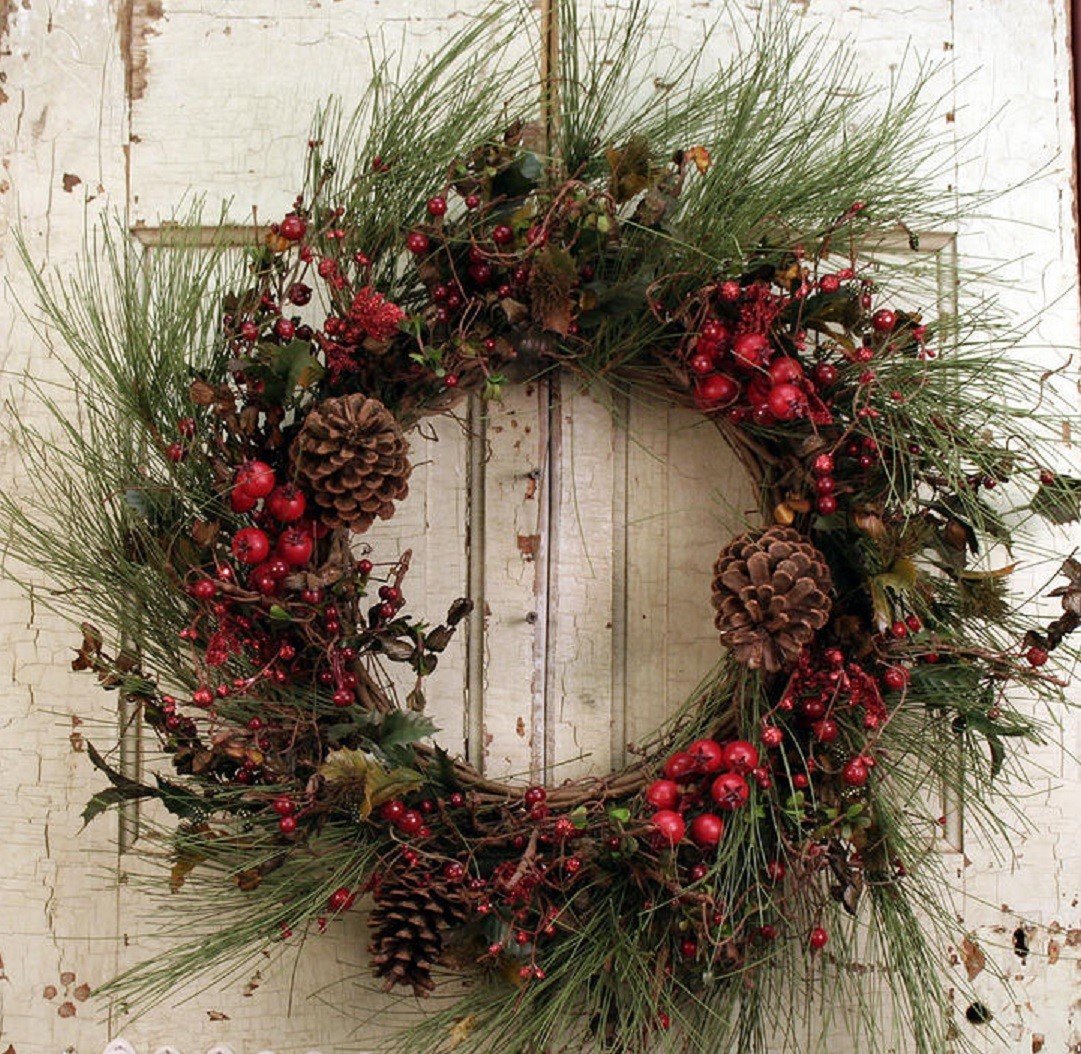Ancient Tradition

Most of us celebrate the holiday season by hanging a wreath on the door. It could be made of fresh or dried greenery, with berries or bells adorning the flora. Have you ever wondered where that tradition originated?
You have to go way back to ancient Egypt and Greece to find the wreath’s original purpose, which was usually as a headdress for royalty. In Rome, laurel wreaths were worn by emperors and awarded to poets as well as winning athletes at the Greco-Roman Olympic games as a badge of honor. Ancient Germanic and Scandinavian cultures used wreaths during the Yule holiday, a 12-day festival marking the winter solstice and the promise of spring to come.
Though other religions use wreaths to celebrate certain holidays, probably the most well-known tradition of hanging wreaths is around the Christian Christmas season. The word “wreath” is derived from the Old English word “writhan,” meaning “to twist.” Most Christmas wreaths are circular, meant to embody eternal life and God’s unending love. The wreaths used for Advent are placed flat and are typically made of evergreens like holly oak and red berries, meant to symbolize the crown of thorns Jesus wore and the blood he shed on the cross. The Advent wreath holds four candles, three purple and one pink. The first purple candle lit, the prophecy candle, symbolizes hope. On the second Sunday of Advent, the second purple candle, symbolizing love, is lit. The pink candle, representing joy, is lit on the third Sunday. And the final candle, the purple one representing peace, is lit on the fourth Sunday. Some add a white candle, lit on Christmas Eve or Christmas Day to celebrate the coming of Christ.
Despite its religious origins and popularity with many cultures, for some the wreath is simply a holiday decoration, a welcoming and festive addition hung on the front door. For many, the most efficient and simple option is to visit a local home improvement or craft store and pick out your favorite ready-made creation. But for others, the act of making the wreath oneself with fresh greenery and other natural or creative materials is both fun and satisfying. One need look no further than You Tube to find multiple videos – from Martha Stewart to Good Housekeeping – to give you step-by-step instructions for making your masterpiece. And isn’t it more impressive to tell your visitors you made it yourself?











Leave a Reply